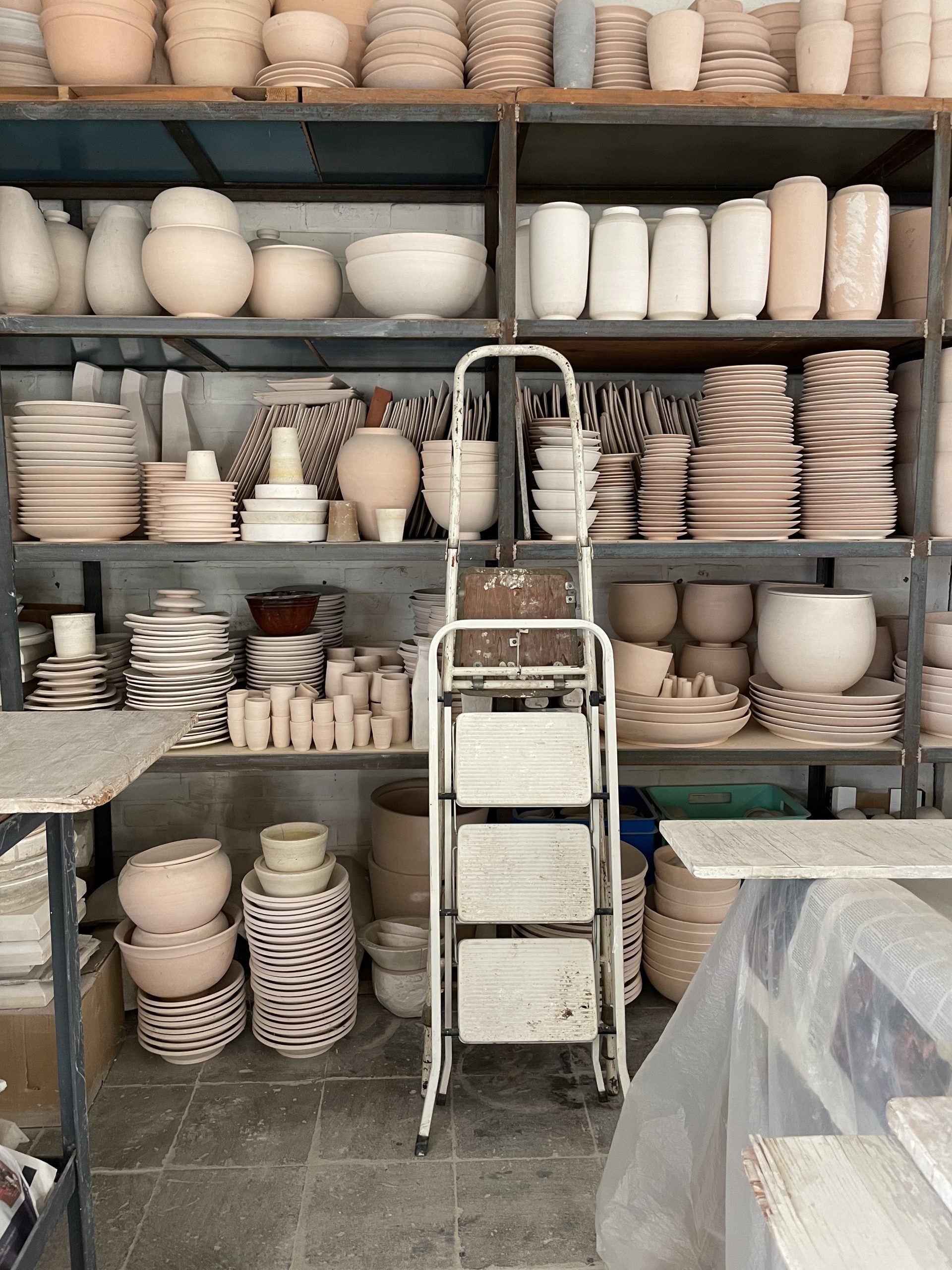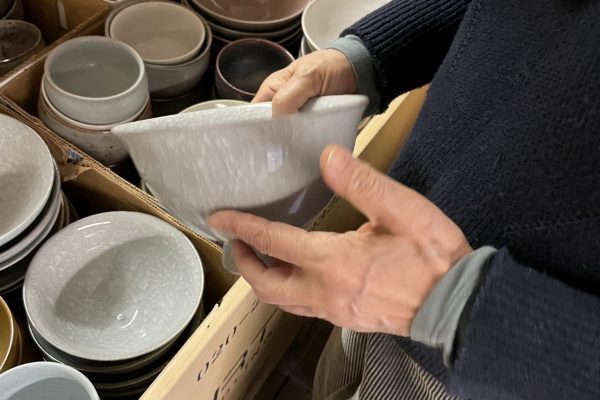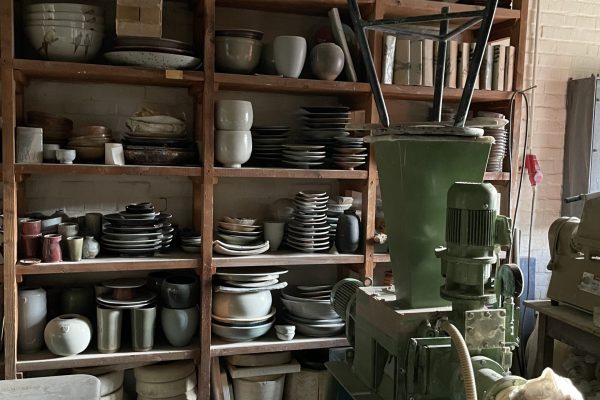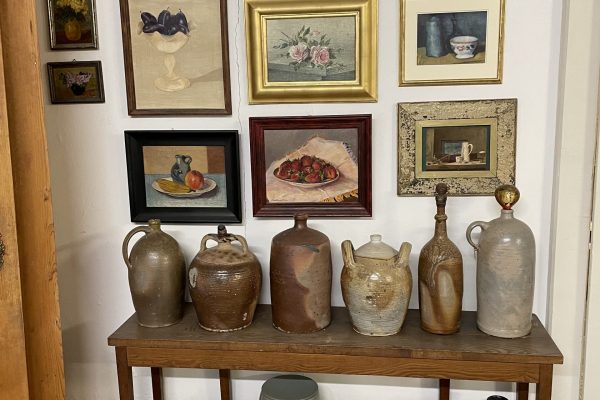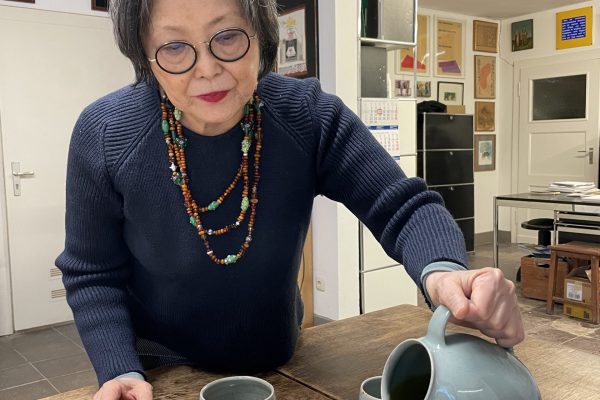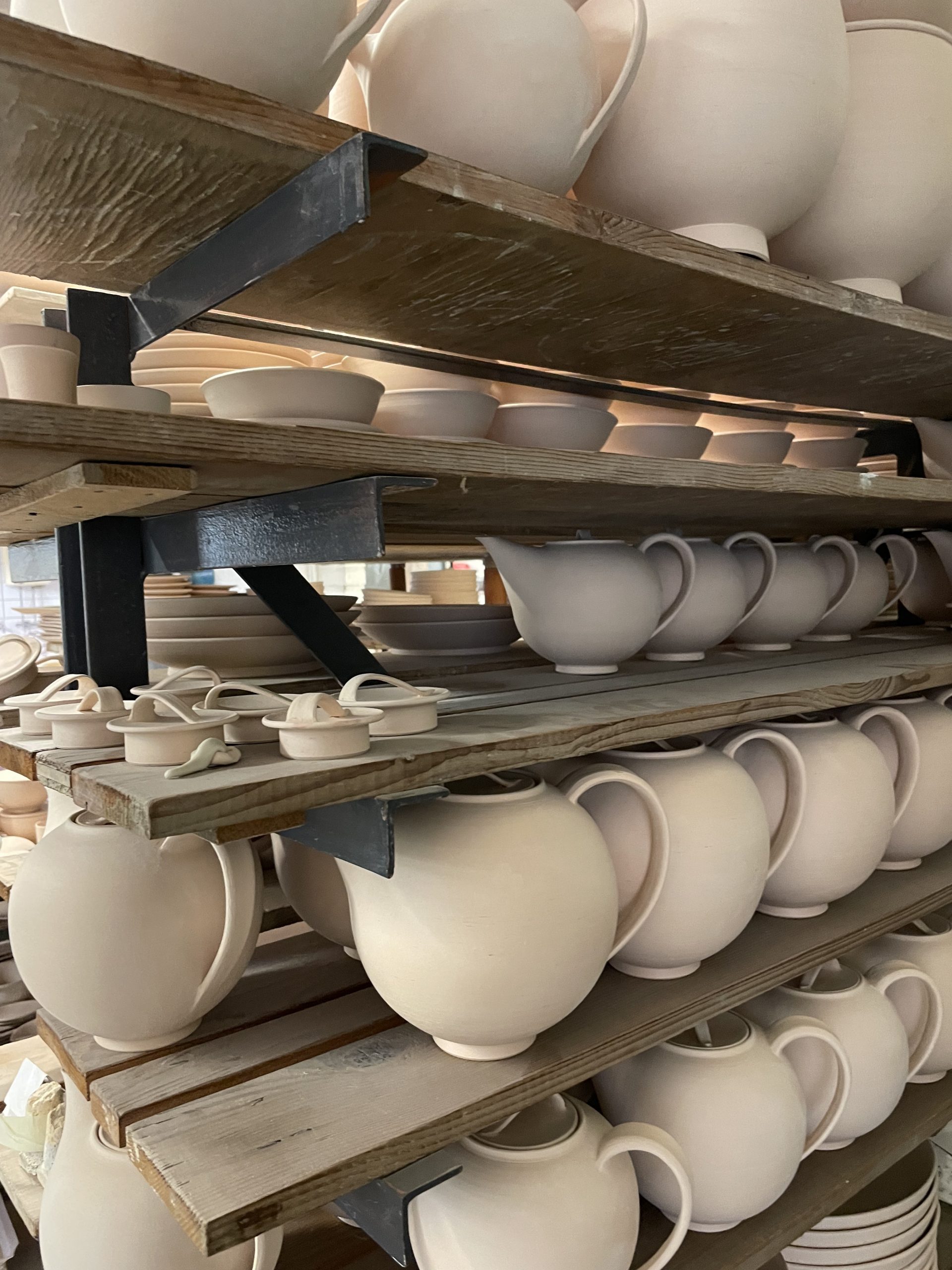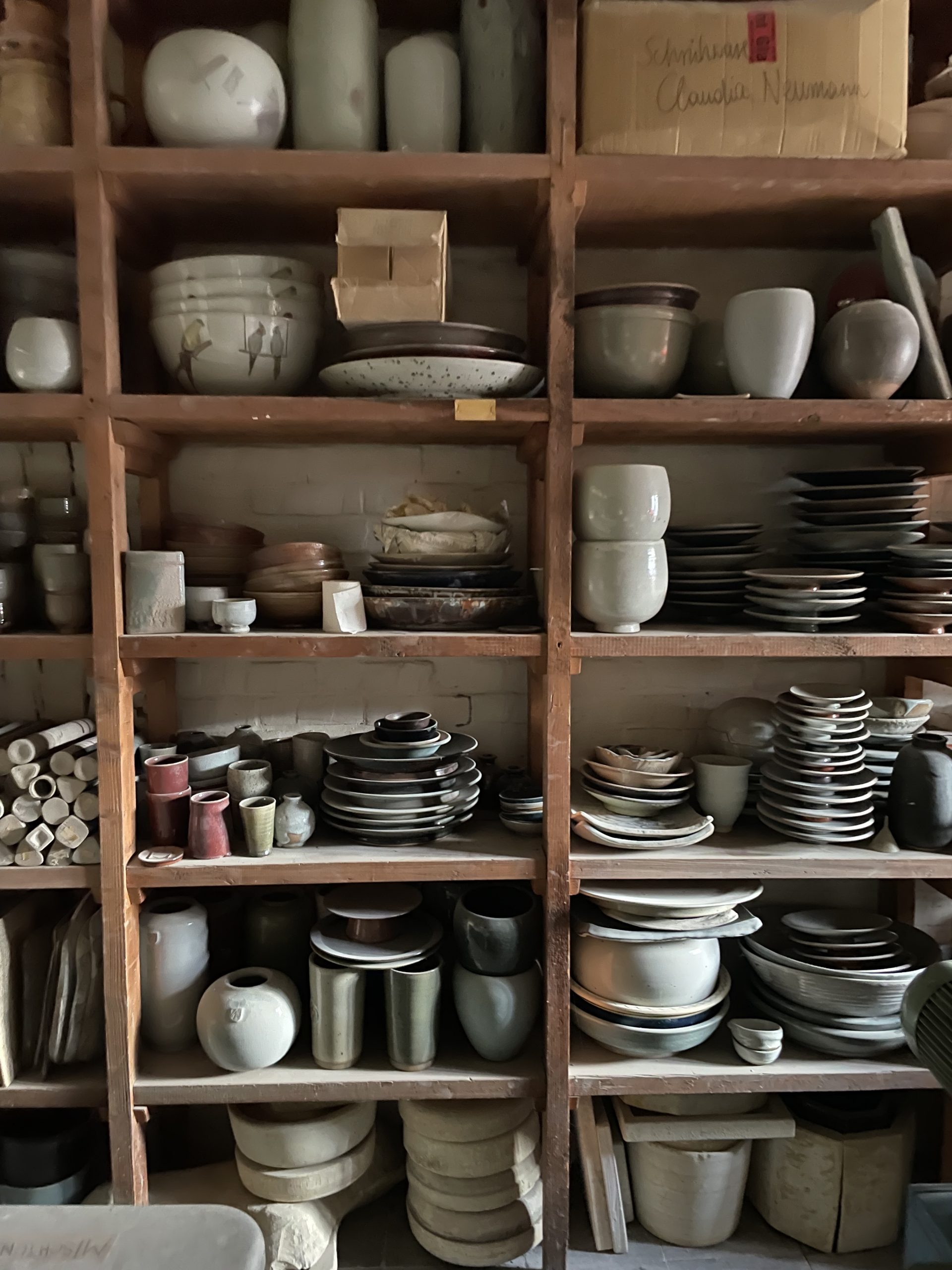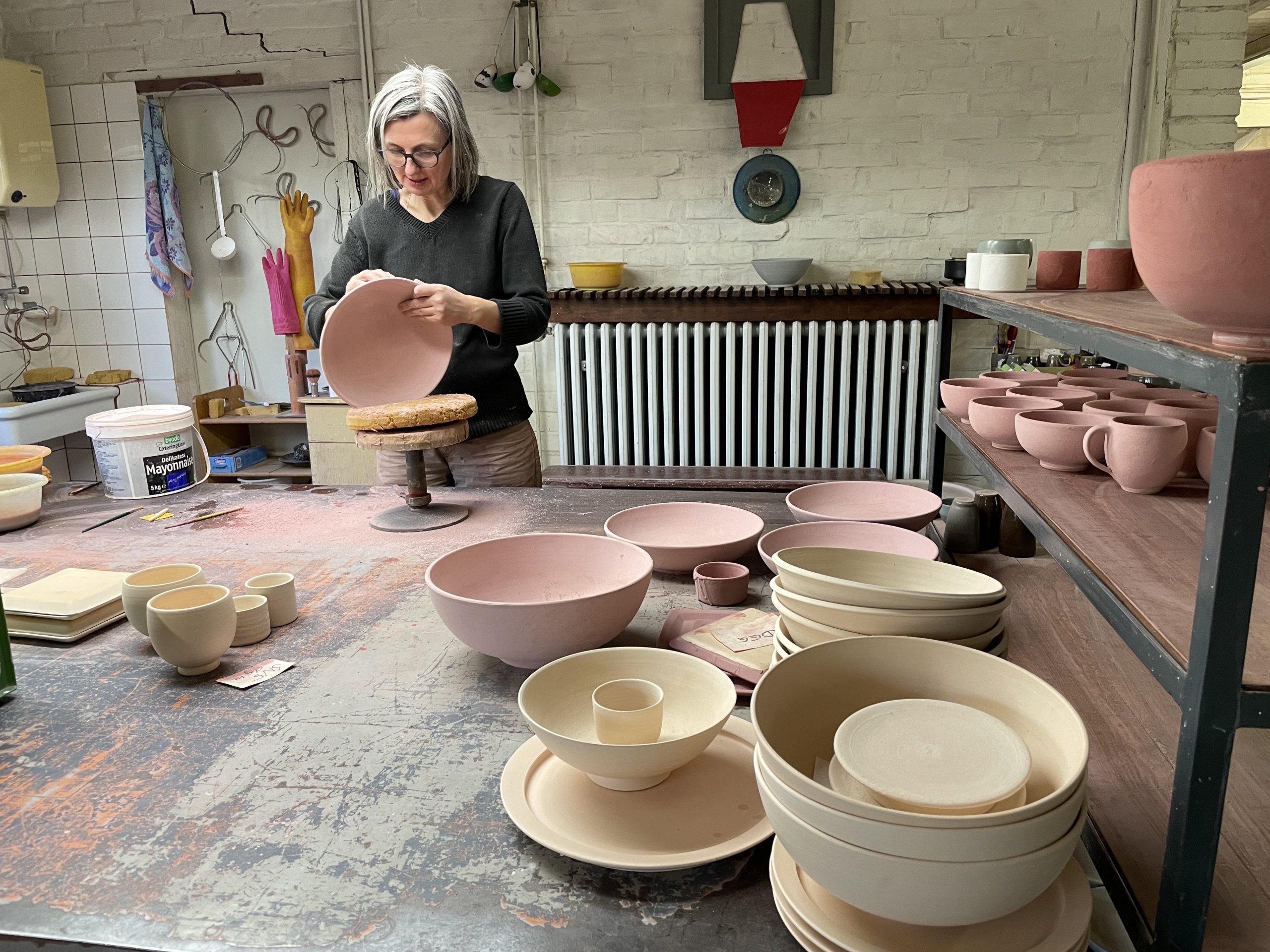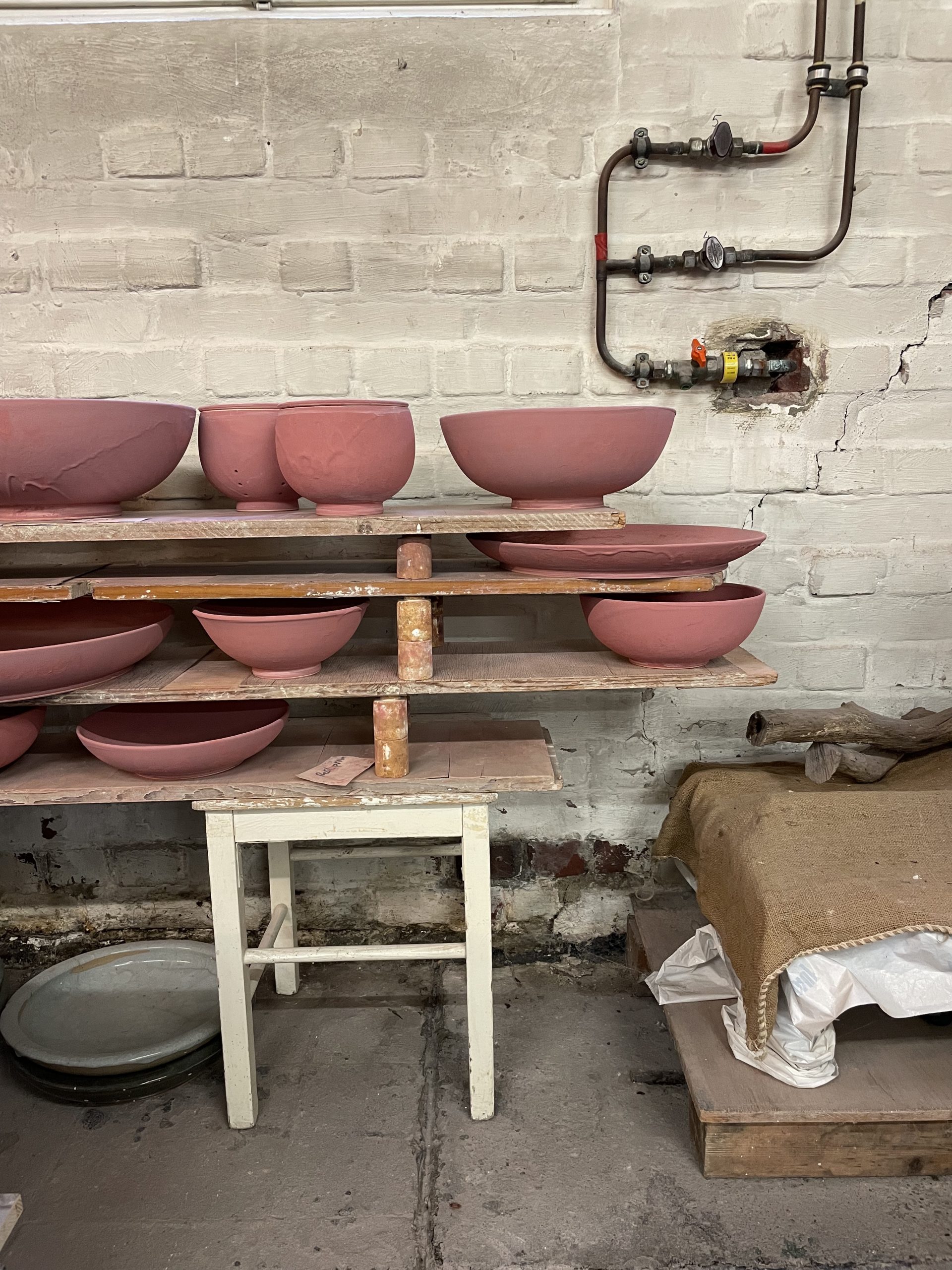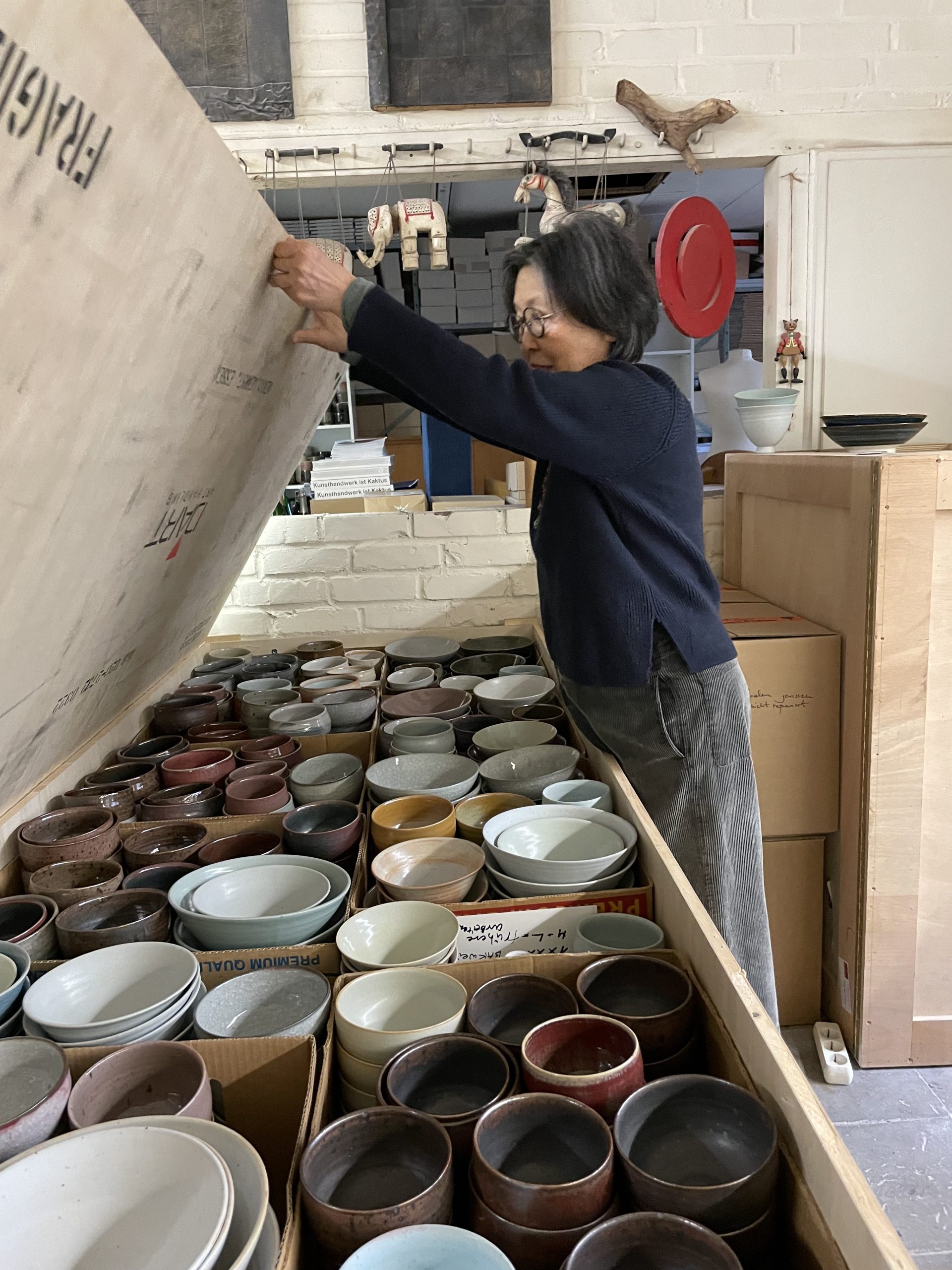What sets your work apart from conventional ceramics?
We always start out from basic geometric shapes. Our vessel forms emerge from the craft technique. In contrast to other European ceramics, which are often characterised by strong design considerations, these shapes result entirely from turning on the potter’s wheel. Just as in Asian pottery, we work from the inside out and from the bottom up in our workshop to create volume, no matter the size of the vessels.
Have your forms changed over the years?
No. The design language we developed in 1987 has remained unchanged ever since. Our first piece was a cereal bowl. Then we added a drinking cup, a jug, a plate. Months of experimentation led to the development of our six-tone colour scale, also all the way back in 1987: a matt and a glossy light blue-green, a matt and a glossy dark green, an off-white and a rusty brown. None of this has changed since. One thing that has changed, however, is that constant adaptation to contemporary table culture has led us to add some shapes and formats, including vases, plant pots, and jars. We have 50 different models in total now.
What is the attraction for you in maintaining this repertoire?
For me – and I follow Korean tradition here – perfect mastery of my existing repertoire is more important than keeping on reinventing of forms. Only internalisation of the forms can turn my daily work at the wheel into a kind of retreat that goes beyond all routine. That gives us freedom. The potters’ personalities start adding to it. Their individuality will be expressed in the final craftsmanship.
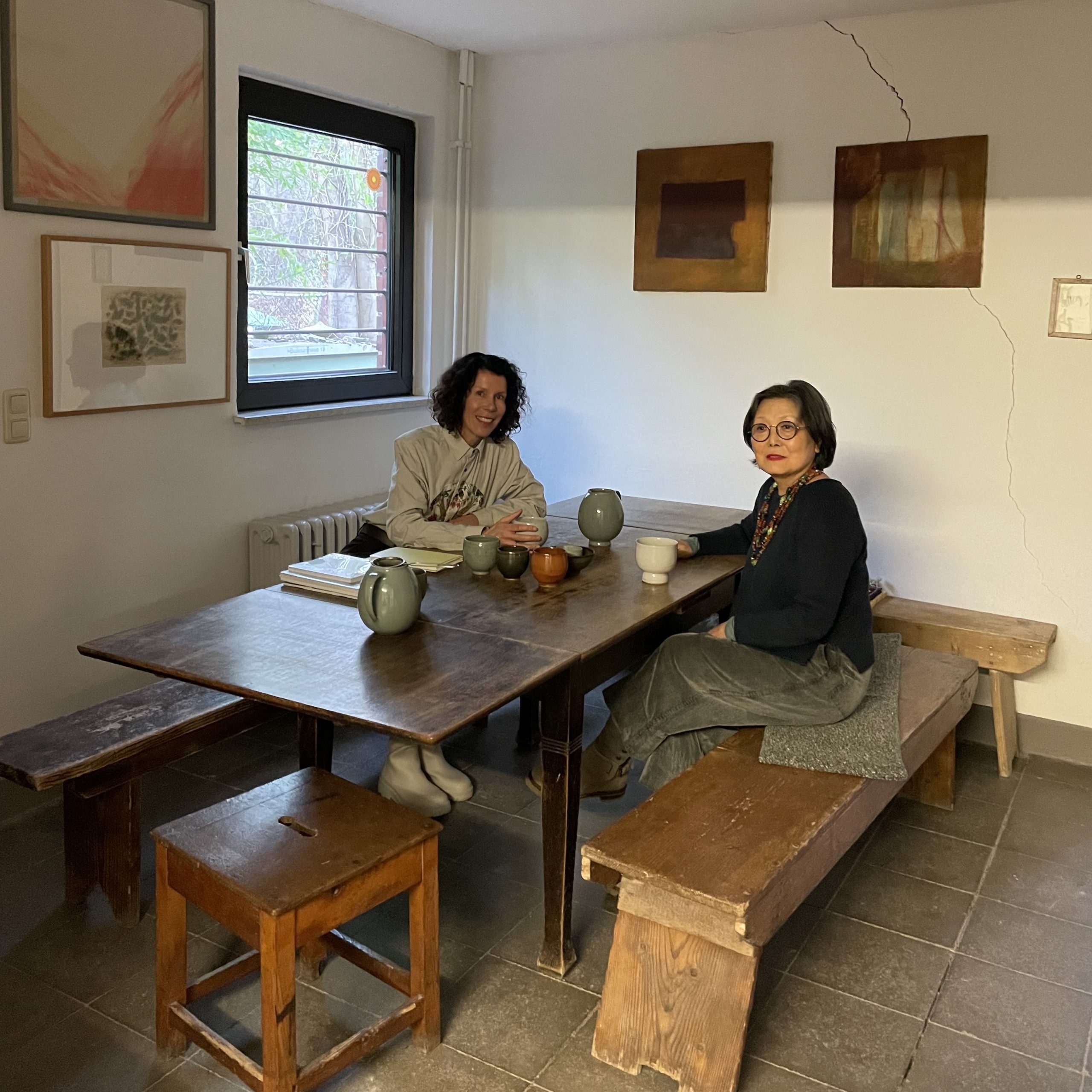
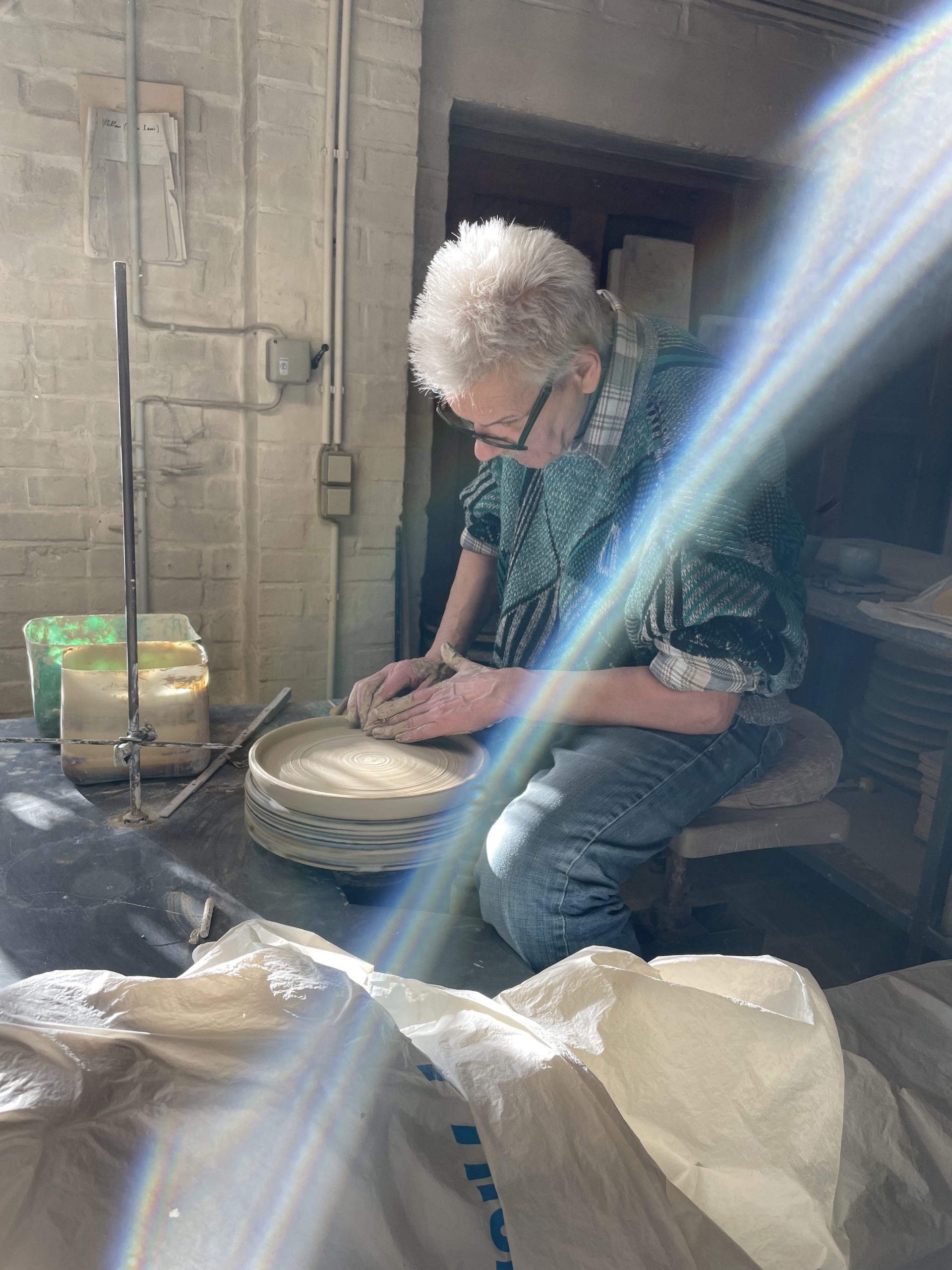
You are working in a team with several masters here.
Yes. Michael Schmandt, who has been working here for 50 years, Daniela Glattki from Poland, and Shoko Ishioka from Japan are our masters. I only make unique pieces myself. Estar Halfmann and Leonie Muelbredt are our current apprentices. By the way, we are the only pottery business in North Rhine-Westphalia still qualified to train apprentices.
You have been working with clay for more than five decades. Do you remember your first contact with ceramics?
Yes, I remember very well. My Korean grandfather, a Confucian scholar, had large white ceramic storage jars to keep dried khakis under oiled rice paper in. When I visited him, I was allowed to remove the rice paper and eat one of the delicious khakis. Even then, as a child, I loved those vessels. Later, when I was 20, I travelled to Germany to learn how to make ceramics at an art academy. I didn’t want to leave it at studying the technique of “porcelain-like stoneware”, as it is called in Korea, but to broaden my horizons artistically. As a student, I then went deeply into Western cultural history – and discovered that people in Germany knew little about Korean art at the time. Trying to find my own artistic position, I ended up rediscovering Korean culture here, in Europe.
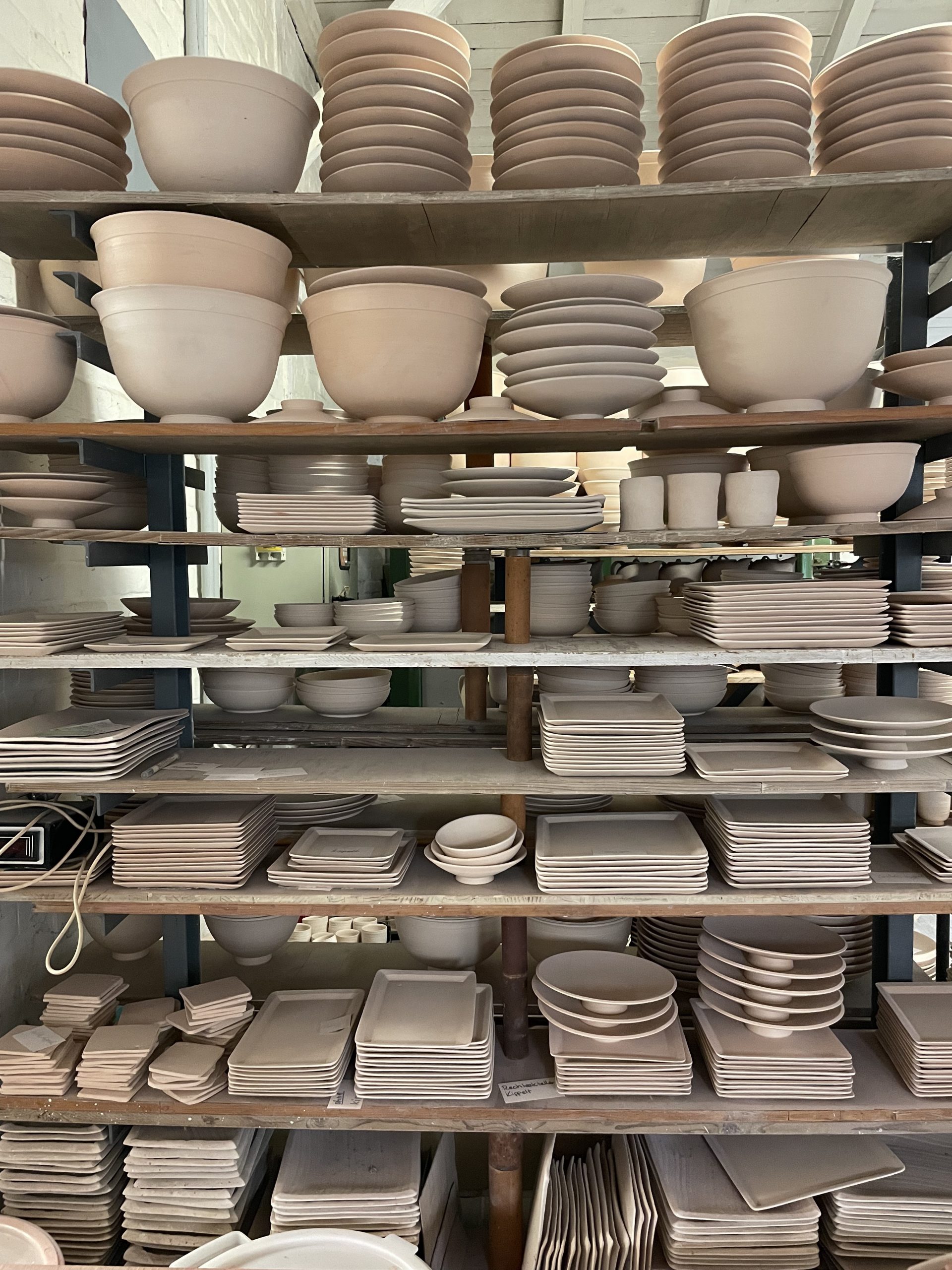
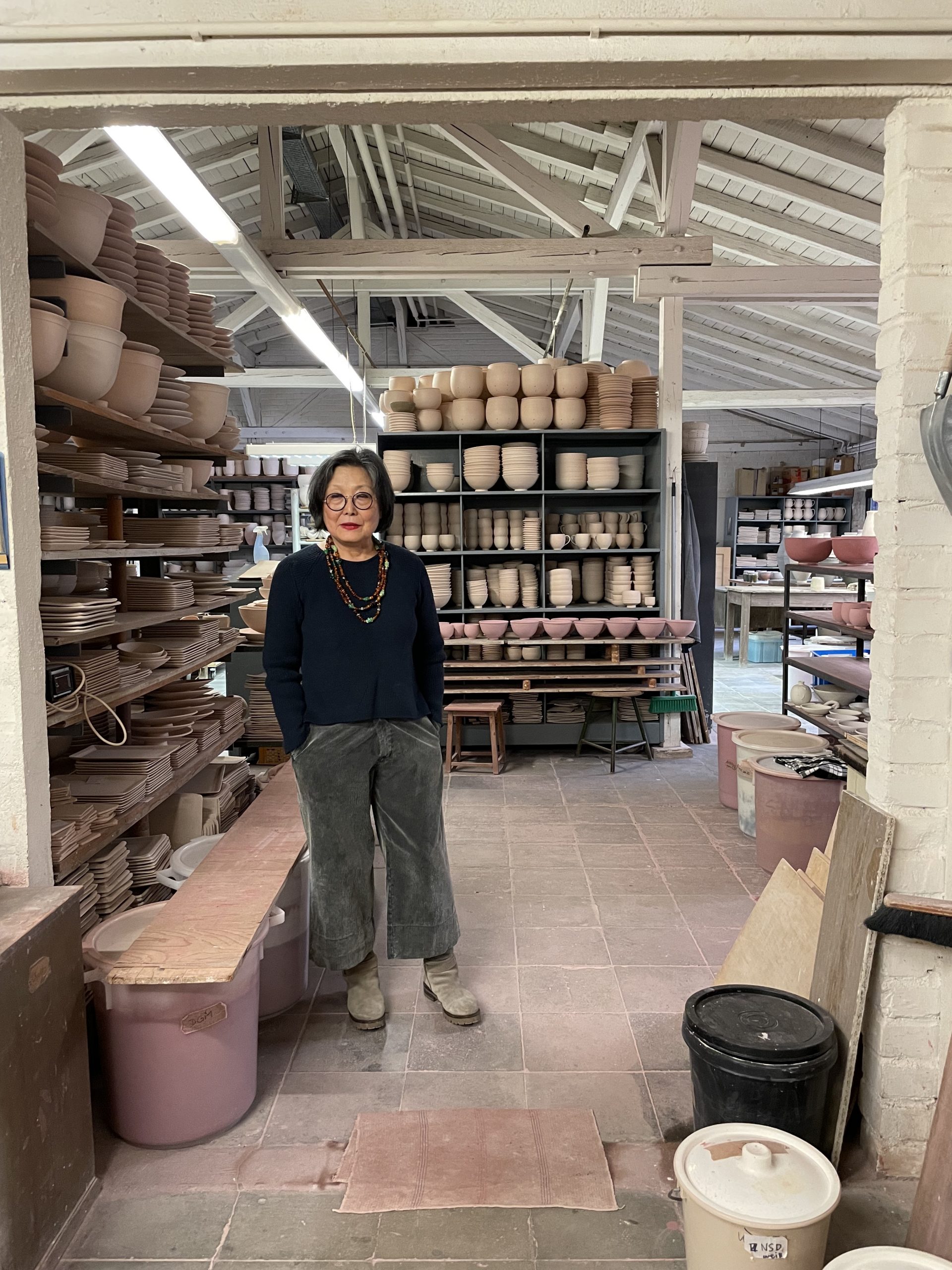
Influence
What are the most important European influences reflected in the work at Keramische Werkstatt Margaretenhöhe?
I studied form design at the Fachhochschule Wiesbaden, the former Wiesbaden Werkkunstschule, under Professor Erwin Schutzbach. He was my most important teacher. I admired Constantin Brâncuși and Alberto Giacometti, but also Joseph Beuys. When I heard that the Keramische Werkstatt Margaretenhöhe was looking for a new director, I found the thought of working in the Bauhaus tradition quite attractive. Even though the Keramische Werkstatt Margaretenhöhe is not a Bauhaus workshop as such, it is rooted in that tradition.
What does the future hold for the Keramische Werkstatt Margaretenhöhe?
At the moment and until 23 April, it has the “Contemporary Craft” exhibition hosted in Hamburg’s Museum für Kunst und Gewerbe. Galerie Karsten Greve in Cologne has recently started representing us in addition to the Munich Jahn & Jahn gallery. My unique pieces are sold through them. We are also open to new things in the workshop, however: At the moment, we are hosting a product design student from Münster who is developing his own designs. As far as our tableware is concerned, it’s almost a bit annoying how extremely durable it is. We do have a loyal clientele, however. Many of them are children of former customers who have inherited a set from their parents and are coming to add to their collection.


